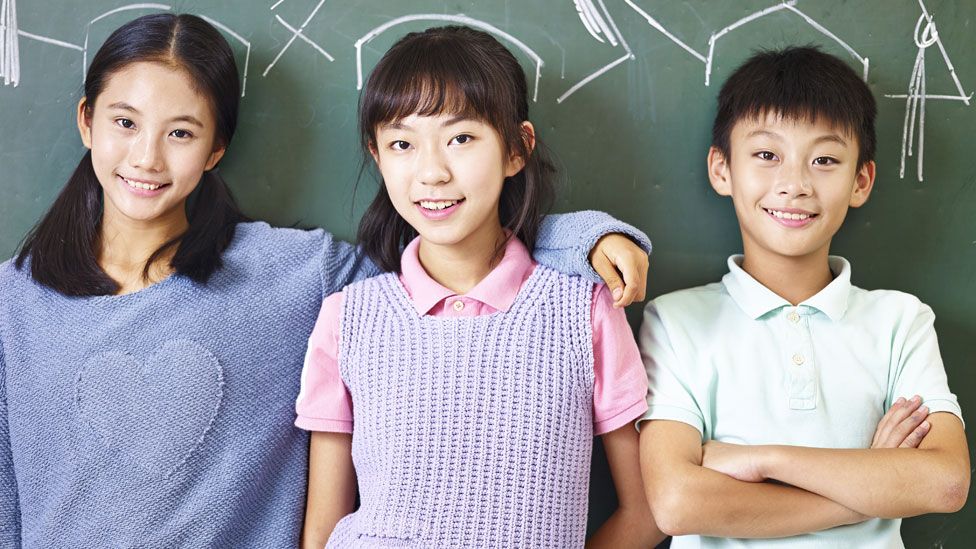Girls 'better at co-operating on problems'
- Published

When young people study or take exams the results are usually about rewarding their individual achievement.
But when they get into the workplace they will be told about the importance of social skills and the need to co-operate with other people on solving problems.
So are school systems out of step with what is needed by young people?
PISA, which compares students' abilities in reading, maths and science, has now carried out the world's first global tests on collaborative problem-solving skills.
As might have been expected, students who are high achievers in academic tests are also likely to be better at problem solving with other people.
They are likely to have the skills in interpreting information and complex reasoning that will help them with any kind of problem solving.
The same holds true across countries. Top-performing countries in academic tests, such as Japan, South Korea, Singapore, Estonia, Finland and Canada, are also high performers at collaborative problem solving.
But it's not always the case. Chinese students, who do very well in maths and science, are only average in their collaborative skills.
Top 20 for collaborative problem solving
- Singapore
- Japan
- Hong Kong
- South Korea
- Canada
- Estonia
- Finland
- Macao
- New Zealand
- Australia
- Taiwan
- Germany
- United States
- Denmark
- United Kingdom
- Netherlands
- Sweden
- Austria
- Norway
- Slovenia
- Belgium
Different skills
Working together seems to involve different types of ability.
Five years ago, PISA carried out tests on individual problem-solving skills.
These showed that boys tended to do better in most countries.
But when the element of collaboration is added to the problem solving, girls outperformed boys in in every country. In the UK this gender gap is one of the largest.
These results are mirrored in students' attitudes.
Girls show more positive attitudes towards relationships, meaning that they tend to be more interested in others' opinions and want others to succeed.
Boys, on the other hand, are more likely to see the benefits of teamwork and how collaboration can help them work more effectively and efficiently.
Disadvantaged students are more likely to see the value of teamwork than their advantaged peers.
They tend to report that they prefer working as part of a team to working alone, and that they think teams make better decisions than individuals.
Schools with more diversity in their student intake are also more likely to be associated with better collaborative skills, at least relative to performance in the academic disciplines.
Teachers make a difference
The classroom environment seems to influence how well students work together.
When students have a lot of communication-intensive activities - such as taking part in class debates or arguing about science questions - they are more likely to have positive attitudes towards collaboration.
Where teachers are supportive and have more positive relationships with students, this also is more likely to be linked to higher levels of working together.
More from Global education
Ideas for the Global education series? Get in touch.
Schools can identify students who are socially isolated and provide social activities where they can build relationships - and they can work harder to prevent bullying.
So teachers can make a difference in encouraging such co-operation and making schools places that support collaborative behaviour.
But education does not end at the school gate.
Parents need to play their part too. For example, students scored much higher in the collaborative problem-solving assessment when their parents showed an interest in school activities.
What happens outside school is important, with social, or perhaps anti-social, influences.
Students who use the internet for chatting or social networking tend to better at collaborative problem solving. But students who play video games seem to do worse, even after considering social and economic factors.
But what difference does all this make?
In a world that places a growing premium on social skills, a lot more needs to be done to foster those skills across the school curriculum.
Because strong academic skills will not automatically also lead to strong social skills.